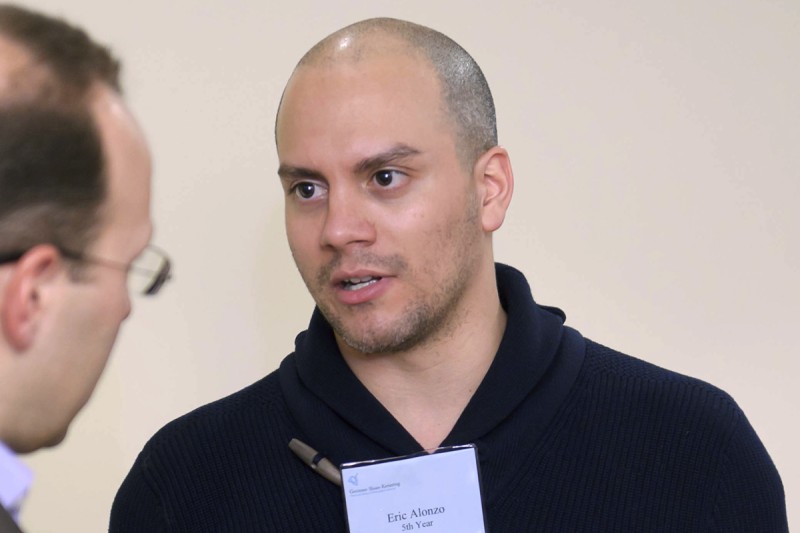
Eric Alonzo
About Eric Alonzo’s Dissertation Research
Eric completed his dissertation research in the laboratory of Dr. Derek Sant’Angelo in the Immunology Program. Broadly, the Sant’Angelo lab is focused on the factors that control lymphocyte development. Specifically, Dr. Sant’Angelo’s lab is interested in the mechanisms by which both lymphocyte progenitors and mature immune cells launch lineage-specific transcriptional programs to control differentiation and function.
Recently, the lab discovered that the BTB-ZF transcription factor PLZF (promyelocytic leukemia zinc finger) controls the robust innate effector functions of invariant natural killer T (NKT) cells and a subset of γδ T cells.
Eric’s thesis research focused on the role of PLZF during γδ T cell development (small subset of T lymphocytes in mice and humans). The factors that control γδ lineage commitment and function are largely unknown. Eric’s work showed that PLZF controls the innate effector functions of a subset γδ T cells that express the Vγ1Vδ6.3 T cell receptor (TCR). Eric and colleagues were the first to show that γδ T cells express ThPOK, another BTB-ZF gene critical for the development of CD4 T cells. In the absence of ThPOK, Vγ1Vδ6.3 T cells develop but are functionally compromised, as they express less PLZF. Therefore, Eric and his colleagues demonstrated, for the first time, that two key BTB-ZF genes control the innate effector functions of Vγ1Vδ6.3 T cells.
Both αβ- and γδ T cells emerge from a common progenitor, and in vitro and in vivo studies support a model whereby αβ/γδ lineage commitment is a result of the relative strength of signal through the TCR. Specifically, γδ T cells require “strong” TCR signals while αβ T cells require “weak” TCR signaling for development. Although γδ T cells were initially thought to require strong TCR signals for development, Eric and colleagues observed a dramatic and selective expansion of PLZF-expressing Vγ1Vδ6.3 T cells in mice possessing mutations that result in weak TCR signals. This surprising finding directly challenged the strength of signal model for αβ/γδ lineage commitment, which was corroborated with data produced by several laboratories. Collectively, these findings have forced a re-evaluation of the data used to support this model and necessitated some revisions of the strength of signal model for γδ T cell development.
Eric is now finishing a follow-up study that focuses on the mechanism that controls the expansion of Vγ1Vδ6.3 T cells in TCR-signaling mutant mice. To do this, he has taken a candidate approach to evaluate genes that function in the TCR-signaling pathway. Eric has generated single- and double-gene-deficient mice to determine the interrelation of different transcription factors. This study has led to the discovery of a gene combination that results in a dramatic alteration in thymopoiesis where the frequency of γδ T cells versus αβ T cells are reversed. γδ T cells were found to be the dominant lymphocyte, representing approximately 60 percent of the cells, 99 percent of which express the Vγ1Vδ6.3 TCR. “Our findings uncover a fundamental regulatory pathway that favors the development of Vγ1Vδ6.3 T cells, while restricting the maturation of pro-T cells into the conventional T cell lineage,” Eric says.
“Derek’s guidance through my thesis research was critical to any success I’ve had since joining his lab. In particular, he allowed me to explore my curiosities and follow my instincts, even in the face of complex scientific hurdles, while always being there to guide me through the challenges I often faced,” Eric concludes.
Eric graduated from San Francisco State University before joining the Gerstner Sloan Kettering Graduate School of Biomedical Sciences. Eric was supported by the Ruth L. Kirschstein National Research Service Award for four years (2007-11). For his postdoctoral research studies, Eric is focusing on chromatin biology in stem cell and lymphocyte development in the laboratory Dr. Katia Georgopoulos at Harvard University, which he began this past October.